MaryAnn Bernal's Blog, page 182
April 16, 2015
Historical Romance - Discussion with guest Mary Ann Bernal - World Of Ink Special 05/05 by WorldOfInkNetwork | Romance Podcasts
Historical Romance - Discussion - World Of Ink Special 05/05 by WorldOfInkNetwork | Romance Podcasts

Please join Marsha Casper Cook on May 5 at 9PM EST 8 PM CST 7 PM MT 6 PM PST and her guests - Leigh Michaels, Mary Ann Bernal and Kelly Abell. All three authors will talk about writing Historical novels, characters, places and events leading up to their writing Historical Romances. It's going to be a great show with lots of information and fun.
Please feel free to call in or go into the chat room(714) 242-5259
 WorldOfInkNetwork
WorldOfInkNetwork

Please join Marsha Casper Cook on May 5 at 9PM EST 8 PM CST 7 PM MT 6 PM PST and her guests - Leigh Michaels, Mary Ann Bernal and Kelly Abell. All three authors will talk about writing Historical novels, characters, places and events leading up to their writing Historical Romances. It's going to be a great show with lots of information and fun.
Please feel free to call in or go into the chat room(714) 242-5259
 WorldOfInkNetwork
WorldOfInkNetwork
Published on April 16, 2015 14:15
History Trivia - Greek king Odysseus' returns home
April 16
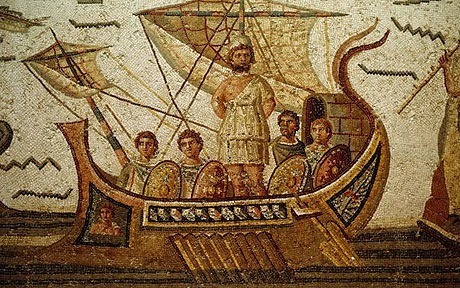
1178 BC The calculated date of the Greek king Odysseus' return home from the Trojan War.
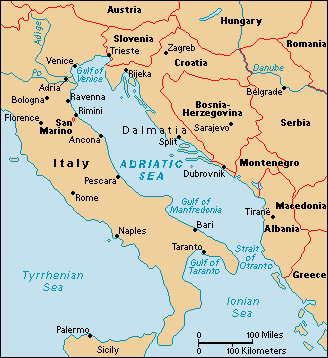
1071 Bari, (coastal region off the Adriatic Sea) fell to Norman Robert Guiscard, ending five centuries of Byzantine rule in southern Italy.

1521 Martin Luther made his first appearance before the Diet of Worms to be examined by the Holy Roman Emperor Charles V. According to tradition, April 16th was the day that Pope Innocent III gave his oral approbation to the rule of the order founded by St. Francis of Assisi.

1178 BC The calculated date of the Greek king Odysseus' return home from the Trojan War.

1071 Bari, (coastal region off the Adriatic Sea) fell to Norman Robert Guiscard, ending five centuries of Byzantine rule in southern Italy.

1521 Martin Luther made his first appearance before the Diet of Worms to be examined by the Holy Roman Emperor Charles V. According to tradition, April 16th was the day that Pope Innocent III gave his oral approbation to the rule of the order founded by St. Francis of Assisi.
Published on April 16, 2015 02:00
April 15, 2015
Did the Thames really used to freeze over?
History Extra
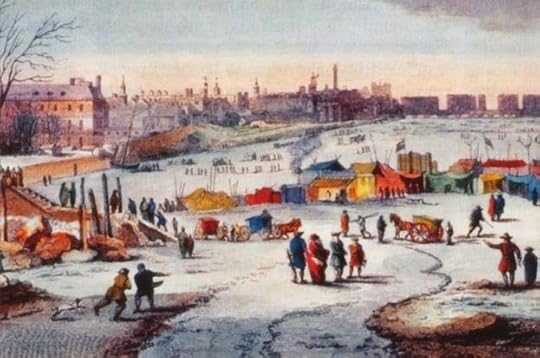 The London Frost Fair, 1683-84, by Thomas Wyke
The London Frost Fair, 1683-84, by Thomas Wyke
With the Sun shining and summer on its way, it’s hard to imagine that the mighty river could ever fully freeze over.
This article was first published in the April 2015 issue of History Revealed
Yet, the Thames froze at London at least 23 times between 1408 and 1814, though several of these events lasted only a few days.
The freezing of the river, where ice is now rarely seen, was caused by three factors. First, the climate in Britain was on average about one degree (Celsius) colder between about 1400 and 1800 than before or since.
Second, the Thames was then wider and shallower than it is today, as it is now restricted between solid embankments.
Finally, the numerous narrow arches of the medieval London Bridge partially blocked the water on the upstream side, reducing the flow.
During the big chill of 1683-4, the Thames froze for two months, with ice some 28cm thick. This provided a pleasant cold comfort for Londoners as the Thames became a stage for the most famous of the London Frost Fairs. The frozen festival featured horse racing, bear-baiting and puppet shows – all on the ice. It was described as a “carnival on the water”.
Answered by one of our Q&A experts, Rupert Matthews. For more fascinating questions by Rupert, and the rest of our panel, pick up a copy of History Revealed! Available in print and for digital devices.
 The London Frost Fair, 1683-84, by Thomas Wyke
The London Frost Fair, 1683-84, by Thomas Wyke With the Sun shining and summer on its way, it’s hard to imagine that the mighty river could ever fully freeze over.
This article was first published in the April 2015 issue of History Revealed
Yet, the Thames froze at London at least 23 times between 1408 and 1814, though several of these events lasted only a few days.
The freezing of the river, where ice is now rarely seen, was caused by three factors. First, the climate in Britain was on average about one degree (Celsius) colder between about 1400 and 1800 than before or since.
Second, the Thames was then wider and shallower than it is today, as it is now restricted between solid embankments.
Finally, the numerous narrow arches of the medieval London Bridge partially blocked the water on the upstream side, reducing the flow.
During the big chill of 1683-4, the Thames froze for two months, with ice some 28cm thick. This provided a pleasant cold comfort for Londoners as the Thames became a stage for the most famous of the London Frost Fairs. The frozen festival featured horse racing, bear-baiting and puppet shows – all on the ice. It was described as a “carnival on the water”.
Answered by one of our Q&A experts, Rupert Matthews. For more fascinating questions by Rupert, and the rest of our panel, pick up a copy of History Revealed! Available in print and for digital devices.
Published on April 15, 2015 07:45
History Trivia - Battle at Bedriacum - Vespasian ascends the throne
April 15
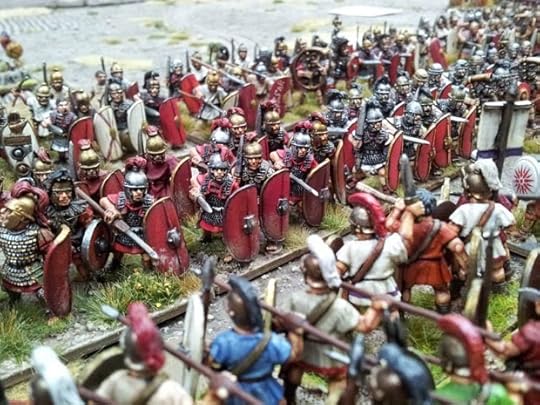
69 - Battle at Bedriacum, North-Italy fought during the Year of the Four Emperors, which resulted in Vespasian ascending the throne near the end of the bloody year of crisis.
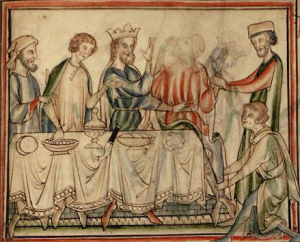
1053 Godwin, Earl of Wessex died. He was one of the most powerful lords in England under the Danish king Cnut the Great and his successors. Cnut made him the first Earl of Wessex. Godwin was the father of King Harold Godwinson and Edith of Wessex, wife of King Edward the Confessor.
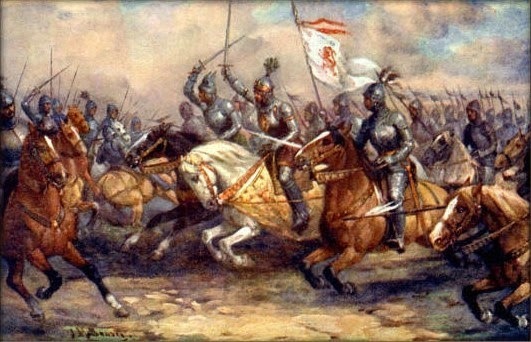
1450 Battle of Formigny: Toward the end of the Hundred Years' War, the French attacked and nearly annihilated English forces, ending English domination in Northern France.

69 - Battle at Bedriacum, North-Italy fought during the Year of the Four Emperors, which resulted in Vespasian ascending the throne near the end of the bloody year of crisis.

1053 Godwin, Earl of Wessex died. He was one of the most powerful lords in England under the Danish king Cnut the Great and his successors. Cnut made him the first Earl of Wessex. Godwin was the father of King Harold Godwinson and Edith of Wessex, wife of King Edward the Confessor.

1450 Battle of Formigny: Toward the end of the Hundred Years' War, the French attacked and nearly annihilated English forces, ending English domination in Northern France.
Published on April 15, 2015 01:30
April 14, 2015
Richard III May Have Hid His Scoliosis Until Death
Rossella Lorenzi
Discovery News
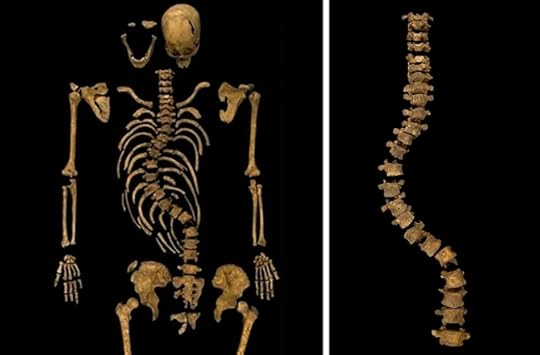
 Careful tailoring may have helped King Richard III keep his his severe scoliosis a secret right up until his death in 1485, says a new study into historical sources about Richard’s condition and posthumous reputation.
Careful tailoring may have helped King Richard III keep his his severe scoliosis a secret right up until his death in 1485, says a new study into historical sources about Richard’s condition and posthumous reputation.
Richard III suffered from a spine curving condition known as adolescent idiopathic scoliosis, which he most likely developed after the age of about 10. The 15h century king was reinterred last month with a solemn ceremony at Leicester Cathedral, 530 years after his death and more than two years after archaeologists discovered his twisted skeleton in a car park.
Photos: Bidding Farewell to Richard III
According to Mary Ann Lund, of the School of English at the University of Leicester, Richard III probably kept any signs of his scoliosis hidden outside of the royal household as part of his "propaganda of power."
"It is highly likely that Richard took care to control his public image," Lund wrote in the Medical Humanities journal.
"Tailoring probably kept the signs of his scoliosis hidden to spectators outside the royal household of attendants, servants and medical staff who dressed, bathed and tended to the monarch's body," she added.
Photos: King Richard III Buried (Again)
Lund noted that no mention of Richard's anatomical abnormality survives from during his lifetime, perhaps out of respect to a reigning monarch, or perhaps because he hid it so well.
Richard, who reigned from 1483 to 1485, was probably treated by his surgically trained physician with a mixture of painful axial traction and manual manipulation — a therapy which needed specially designed equipment, space and assistants.
Did Richard III Get Painful Scoliosis Treatment?
"Yet, it may have been only a relatively small group of people in Richard's trusted circle who knew of his condition. The absence of contemporary testimony does not prove this, however," Lund said.
What is certain is that hundreds of witnesses could see Richard’s severely bent spine after his death.
The last king of England to die on the battlefield, Richard was killed in 1485 at Bosworth. His defeat by Henry Tudor, who became King Henry VII, marked the end of the decades-long fight over the throne known as War of the Roses and the end of the Plantagenet dynasty.
Historical sources report Richard was vilified, stripped naked, slung across a horse and paraded through Leicester to let people know he was truly dead.
Richard III Reburial: Is England Honoring a Murderer?
"That moment after Bosworth inaugurated a longer and more brutalizing process, in which an ever-more twisted physique was revealed to the public eye, his own body becoming deployed as a major tactic in the rhetorical strategy against him," Lund said.
Richard was depicted by Shakespeare as a bloodthirsty usurper, a hunchback, a "foul bunch-backed toad," during the Tudor period. He was also portrayed with a withered arm and unequal limbs — none of which were evident on the skeleton — to fit his blackened reputation.
"Stage history has reincarnated Richard as monster, villain and clown, but recent events have helped us to re-evaluate these physically defined depictions and strip back the cultural accretions that have surrounded his body," Lund concluded.
Image: Richard III's twisted skeleton; right: his severely bent spine. Credit: University of Leicester.
Discovery News

 Careful tailoring may have helped King Richard III keep his his severe scoliosis a secret right up until his death in 1485, says a new study into historical sources about Richard’s condition and posthumous reputation.
Careful tailoring may have helped King Richard III keep his his severe scoliosis a secret right up until his death in 1485, says a new study into historical sources about Richard’s condition and posthumous reputation.Richard III suffered from a spine curving condition known as adolescent idiopathic scoliosis, which he most likely developed after the age of about 10. The 15h century king was reinterred last month with a solemn ceremony at Leicester Cathedral, 530 years after his death and more than two years after archaeologists discovered his twisted skeleton in a car park.
Photos: Bidding Farewell to Richard III
According to Mary Ann Lund, of the School of English at the University of Leicester, Richard III probably kept any signs of his scoliosis hidden outside of the royal household as part of his "propaganda of power."
"It is highly likely that Richard took care to control his public image," Lund wrote in the Medical Humanities journal.
"Tailoring probably kept the signs of his scoliosis hidden to spectators outside the royal household of attendants, servants and medical staff who dressed, bathed and tended to the monarch's body," she added.
Photos: King Richard III Buried (Again)
Lund noted that no mention of Richard's anatomical abnormality survives from during his lifetime, perhaps out of respect to a reigning monarch, or perhaps because he hid it so well.
Richard, who reigned from 1483 to 1485, was probably treated by his surgically trained physician with a mixture of painful axial traction and manual manipulation — a therapy which needed specially designed equipment, space and assistants.
Did Richard III Get Painful Scoliosis Treatment?
"Yet, it may have been only a relatively small group of people in Richard's trusted circle who knew of his condition. The absence of contemporary testimony does not prove this, however," Lund said.
What is certain is that hundreds of witnesses could see Richard’s severely bent spine after his death.
The last king of England to die on the battlefield, Richard was killed in 1485 at Bosworth. His defeat by Henry Tudor, who became King Henry VII, marked the end of the decades-long fight over the throne known as War of the Roses and the end of the Plantagenet dynasty.
Historical sources report Richard was vilified, stripped naked, slung across a horse and paraded through Leicester to let people know he was truly dead.
Richard III Reburial: Is England Honoring a Murderer?
"That moment after Bosworth inaugurated a longer and more brutalizing process, in which an ever-more twisted physique was revealed to the public eye, his own body becoming deployed as a major tactic in the rhetorical strategy against him," Lund said.
Richard was depicted by Shakespeare as a bloodthirsty usurper, a hunchback, a "foul bunch-backed toad," during the Tudor period. He was also portrayed with a withered arm and unequal limbs — none of which were evident on the skeleton — to fit his blackened reputation.
"Stage history has reincarnated Richard as monster, villain and clown, but recent events have helped us to re-evaluate these physically defined depictions and strip back the cultural accretions that have surrounded his body," Lund concluded.
Image: Richard III's twisted skeleton; right: his severely bent spine. Credit: University of Leicester.
Published on April 14, 2015 08:07
History Trivia - the fortress of Masada falls
April 14

70 Siege of Jerusalem: Titus, son of Emperor Vespasian, surrounded the Jewish capital, with four Roman legions.

73 after two years of defending the fortress of Masada, the Jews committed mass suicide rather than surrender to the Roman Tenth Legion.
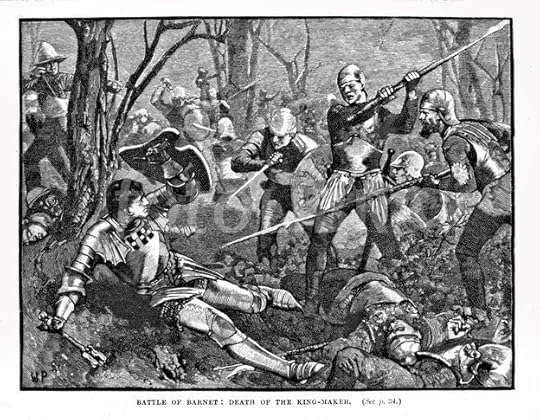
1471 In England, the Yorkists under Edward IV defeated the Lancastrians under the Earl of Warwick (the Kingmaker) at the Battle of Barnet; the Earl was killed and Edward IV resumed the throne.

70 Siege of Jerusalem: Titus, son of Emperor Vespasian, surrounded the Jewish capital, with four Roman legions.

73 after two years of defending the fortress of Masada, the Jews committed mass suicide rather than surrender to the Roman Tenth Legion.

1471 In England, the Yorkists under Edward IV defeated the Lancastrians under the Earl of Warwick (the Kingmaker) at the Battle of Barnet; the Earl was killed and Edward IV resumed the throne.
Published on April 14, 2015 01:00
April 13, 2015
7 things you (probably) didn’t know about Elizabeth I
History Extra
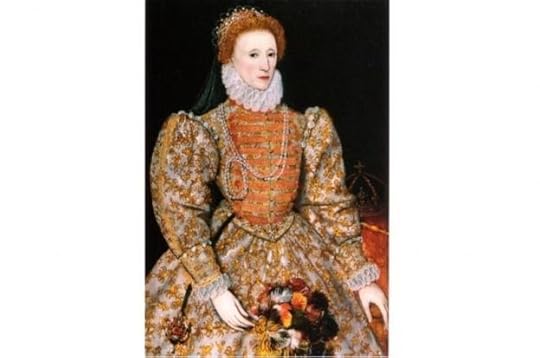 Elizabeth I in the 'Darnley' portrait by an unknown artist c1575. © Pictorial Press Ltd / Alamy
Elizabeth I in the 'Darnley' portrait by an unknown artist c1575. © Pictorial Press Ltd / Alamy
To celebrate the April issue of BBC History Magazine, which explores why the Virgin Queen’s court revolved around politics, not romance, here at our HQ it’s Elizabeth I and the Spanish Armada Week. First up, Tracy Borman reveals some lesser-known facts about the famous monarch
Elizabeth I is one of the most iconic figures in history. She was England’s ‘Gloriana’ – a virgin queen who saw herself as wedded to her country, and who brought almost half a century of stability after the turmoil of her siblings’ short reigns.
Flame-haired, white-faced and always lavishly dressed, Elizabeth possessed the natural charisma of her father, Henry VIII, and was the darling of her people. Her finest hour came in 1588 when she defeated the Spanish Armada, catapulting her to legendary status.
Yet for everything we know about Elizabeth, here are a few facts that might surprise you…
1) Elizabeth was never meant to be queenAlthough Elizabeth is now hailed as one of our greatest monarchs, she should never have got anywhere near the throne. She was not only a girl at a time when the laws of succession favoured boys, but she had an elder sister, Mary. Elizabeth was also removed from the line of succession altogether when her parents’ marriage was declared invalid prior to Anne Boleyn’s execution, and was only reinstated thanks to the kindly intervention of her last stepmother, Katherine Parr.
By the time of Henry VIII’s death, therefore, Elizabeth was third in line to the throne behind her younger brother Edward and elder sister Mary. It is one of the greatest ironies of history that Henry VIII had been so obsessed with having a son, yet his cherished boy only reigned for six years, dying of tuberculosis at the age of just 15. The second in line, Mary, did not fare much better. Her brief, catastrophic reign ended after just five years.
It was up to Elizabeth to show them how it ought to be done.
2) Elizabeth was a mummy’s girlThere is a common misconception that Elizabeth thought little of her ill-fated mother, Anne Boleyn. The fact that she hardly spoke of her and saved all of her praise for her adored father, Henry VIII, has often led to the conclusion that Elizabeth was ashamed of Anne.
On the contrary: all this proved was what a great pragmatist Elizabeth was. She had no wish to alienate swathes of her subjects by openly voicing her love for the woman who was still reviled as the ‘Great Whore’. Instead, Elizabeth chose more subtle ways to demonstrate her affection. For example, when posing for a portrait during her teenage years, she wore her mother’s famous ‘A’ pendant around her neck – an audacious stunt that would have landed her in hot water if her father had spotted it.
As queen, Elizabeth made sure that all of her late mother’s relatives were promoted to the best positions at court, and she also wore a pendant necklace that contained a miniature portrait of her mother opposite one of herself.
3) Elizabeth liked to give nicknames to her courtiersElizabeth was as famous a flirt as her mother, Anne Boleyn. She loved to surround herself with the most handsome men at court, and also entertained various foreign princes all hoping for her hand in marriage.
Elizabeth used her femininity to bring a male-dominated court to its knees, and gave playful nicknames to her favourites. Her chief minister, Burghley, was called her ‘spirit’, and her alleged lover, Robert Dudley, Earl of Leicester, was her ‘eyes’. Rather more cheekily, she called François, Duke of Anjou, her ‘frog’.
4) Elizabeth used dirty tactics to outshine her rivalsElizabeth exalted in being the queen bee at court. But although for the early part of her reign she was the most desirable bride in Europe, as her physical charms began to fade she employed dirty tactics to make sure that she kept all of the male attention to herself. Thus, while Elizabeth appeared at court bedecked in lavish gowns of rich materials and vivid colours, her ladies were obliged to wear only black or white.
No matter how attractive they might be in their own right, the plain uniformity of their dress would draw all eyes to the star of the show. To test the effect that this created, the queen once asked a visiting French nobleman what he thought of her ladies. He immediately protested that he was unable to ‘judge stars in the presence of the sun’. This was exactly the response Elizabeth required.
5) Elizabeth I took longer to get ready than any other monarchElizabeth was always fastidious about her appearance, but the ritual of dressing the queen became increasingly elaborate as age began to overtake her: it took her ladies a staggering four hours a day to complete the ceremony of dressing and undressing the queen.
Elizabeth had originally worn wigs that matched her own colouring, but as she grew older these were used to conceal her greying hair. At the same time, ever more layers of makeup were applied to complete the so-called ‘mask of youth’. Her face, neck and hands were painted with ceruse (a mixture of white lead and vinegar); her lips were coloured with a red paste made from beeswax and plant dye, and her eyes were lined with kohl.
Ironically, most of these cosmetics did more damage to the skin than ageing ever could. Ceruse was particularly corrosive, and one contemporary observed with some distaste: “Those women who use it about their faces, do quickly become withered and grey headed, because this doth so mightily drie up the naturall moisture of their flesh.”
But Elizabeth insisted that she continue to be adorned with this and other dangerous cosmetics, and only ever let her closest ladies see what lay beneath. When the impetuous Earl of Essex famously burst into her chamber before Elizabeth was dressed or made up, he was so shocked by her haggard appearance that he secretly joked about her “crooked carcass” to his friends. Elizabeth found out and it was said that she cut off his head in revenge – although his rebellion against her [in February 1601] probably had something to do with it.
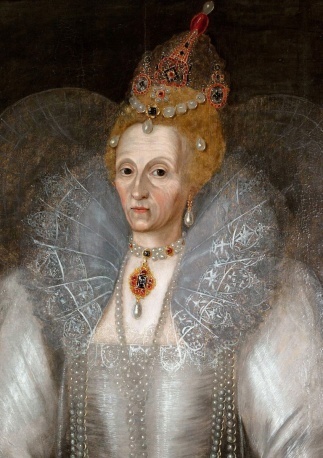
Realistic portrait of Queen Elizabeth I. © GL Archive / Alamy
6) Elizabeth might have been a man(!)Although she has gone down in history as the Virgin Queen, upon her accession it was widely expected that Elizabeth would marry. But as she continued to resist pressure from her councillors to take a husband, rumours began to circulate that there was some secret reason why she was so determined not to marry.
One of the most popular was that Elizabeth had some ‘womanish infirmity’ that prevented her from conceiving. This gained such currency that a foreign ambassador bribed the queen’s laundresses to report on the state of her sheets so that they might discover whether her menstrual cycle was normal.
At the opposite end of the scale, there was a theory that the real reason Elizabeth would not marry was because she was really a man. According to the ‘Bisley Boy’ story, the real Elizabeth had died as a young girl and been replaced by the only redheaded child that could be found. The fact that he was a boy was inconvenient, but he spent the rest of his life dressing as a woman to continue the pretence.
7) Elizabeth is a screen starElizabeth has been portrayed more often in film and on television than any other British monarch. First was Sarah Bernhardt in Les Amours de la Reine Elisabeth (1912), then Bette Davis played her twice – first in The Private Lives of Elizabeth and Essex (1939) and again in The Virgin Queen (1955).
Many more actresses followed, including the iconic portrayal by Glenda Jackson in the BBC television series Elizabeth R (1971). Perhaps inspired by the Bisley Boy legend, a man was cast to play her in 1992’s Orlando, when Quentin Crisp took on the role.
More recently, Cate Blanchett gave us a distinctly un-virginal Elizabeth in the films of 1998 and 2007, while Judi Dench won an Oscar for her brief but brilliant portrayal in Shakespeare in Love (1998). Helen Mirren took on the role with typical aplomb in the TV mini-series Elizabeth I in 2005. Time-travelling time lord, Doctor Who, has also bumped in Queen Elizabeth I in episodes from 1965 and 2007.
Tracy Borman is a leading historian and joint chief curator for Historic Royal Palaces. The paperback of her new biography, Thomas Cromwell: The Untold Story of Henry VIII's Most Faithful Servant (Hodder & Stoughton, 2015) reached number four on The Times Bestseller list and number nine in the Sunday Times bestsellers.
To find out more, visit www.tracyborman.co.uk.
 Elizabeth I in the 'Darnley' portrait by an unknown artist c1575. © Pictorial Press Ltd / Alamy
Elizabeth I in the 'Darnley' portrait by an unknown artist c1575. © Pictorial Press Ltd / Alamy To celebrate the April issue of BBC History Magazine, which explores why the Virgin Queen’s court revolved around politics, not romance, here at our HQ it’s Elizabeth I and the Spanish Armada Week. First up, Tracy Borman reveals some lesser-known facts about the famous monarch
Elizabeth I is one of the most iconic figures in history. She was England’s ‘Gloriana’ – a virgin queen who saw herself as wedded to her country, and who brought almost half a century of stability after the turmoil of her siblings’ short reigns.
Flame-haired, white-faced and always lavishly dressed, Elizabeth possessed the natural charisma of her father, Henry VIII, and was the darling of her people. Her finest hour came in 1588 when she defeated the Spanish Armada, catapulting her to legendary status.
Yet for everything we know about Elizabeth, here are a few facts that might surprise you…
1) Elizabeth was never meant to be queenAlthough Elizabeth is now hailed as one of our greatest monarchs, she should never have got anywhere near the throne. She was not only a girl at a time when the laws of succession favoured boys, but she had an elder sister, Mary. Elizabeth was also removed from the line of succession altogether when her parents’ marriage was declared invalid prior to Anne Boleyn’s execution, and was only reinstated thanks to the kindly intervention of her last stepmother, Katherine Parr.
By the time of Henry VIII’s death, therefore, Elizabeth was third in line to the throne behind her younger brother Edward and elder sister Mary. It is one of the greatest ironies of history that Henry VIII had been so obsessed with having a son, yet his cherished boy only reigned for six years, dying of tuberculosis at the age of just 15. The second in line, Mary, did not fare much better. Her brief, catastrophic reign ended after just five years.
It was up to Elizabeth to show them how it ought to be done.
2) Elizabeth was a mummy’s girlThere is a common misconception that Elizabeth thought little of her ill-fated mother, Anne Boleyn. The fact that she hardly spoke of her and saved all of her praise for her adored father, Henry VIII, has often led to the conclusion that Elizabeth was ashamed of Anne.
On the contrary: all this proved was what a great pragmatist Elizabeth was. She had no wish to alienate swathes of her subjects by openly voicing her love for the woman who was still reviled as the ‘Great Whore’. Instead, Elizabeth chose more subtle ways to demonstrate her affection. For example, when posing for a portrait during her teenage years, she wore her mother’s famous ‘A’ pendant around her neck – an audacious stunt that would have landed her in hot water if her father had spotted it.
As queen, Elizabeth made sure that all of her late mother’s relatives were promoted to the best positions at court, and she also wore a pendant necklace that contained a miniature portrait of her mother opposite one of herself.
3) Elizabeth liked to give nicknames to her courtiersElizabeth was as famous a flirt as her mother, Anne Boleyn. She loved to surround herself with the most handsome men at court, and also entertained various foreign princes all hoping for her hand in marriage.
Elizabeth used her femininity to bring a male-dominated court to its knees, and gave playful nicknames to her favourites. Her chief minister, Burghley, was called her ‘spirit’, and her alleged lover, Robert Dudley, Earl of Leicester, was her ‘eyes’. Rather more cheekily, she called François, Duke of Anjou, her ‘frog’.
4) Elizabeth used dirty tactics to outshine her rivalsElizabeth exalted in being the queen bee at court. But although for the early part of her reign she was the most desirable bride in Europe, as her physical charms began to fade she employed dirty tactics to make sure that she kept all of the male attention to herself. Thus, while Elizabeth appeared at court bedecked in lavish gowns of rich materials and vivid colours, her ladies were obliged to wear only black or white.
No matter how attractive they might be in their own right, the plain uniformity of their dress would draw all eyes to the star of the show. To test the effect that this created, the queen once asked a visiting French nobleman what he thought of her ladies. He immediately protested that he was unable to ‘judge stars in the presence of the sun’. This was exactly the response Elizabeth required.
5) Elizabeth I took longer to get ready than any other monarchElizabeth was always fastidious about her appearance, but the ritual of dressing the queen became increasingly elaborate as age began to overtake her: it took her ladies a staggering four hours a day to complete the ceremony of dressing and undressing the queen.
Elizabeth had originally worn wigs that matched her own colouring, but as she grew older these were used to conceal her greying hair. At the same time, ever more layers of makeup were applied to complete the so-called ‘mask of youth’. Her face, neck and hands were painted with ceruse (a mixture of white lead and vinegar); her lips were coloured with a red paste made from beeswax and plant dye, and her eyes were lined with kohl.
Ironically, most of these cosmetics did more damage to the skin than ageing ever could. Ceruse was particularly corrosive, and one contemporary observed with some distaste: “Those women who use it about their faces, do quickly become withered and grey headed, because this doth so mightily drie up the naturall moisture of their flesh.”
But Elizabeth insisted that she continue to be adorned with this and other dangerous cosmetics, and only ever let her closest ladies see what lay beneath. When the impetuous Earl of Essex famously burst into her chamber before Elizabeth was dressed or made up, he was so shocked by her haggard appearance that he secretly joked about her “crooked carcass” to his friends. Elizabeth found out and it was said that she cut off his head in revenge – although his rebellion against her [in February 1601] probably had something to do with it.

Realistic portrait of Queen Elizabeth I. © GL Archive / Alamy
6) Elizabeth might have been a man(!)Although she has gone down in history as the Virgin Queen, upon her accession it was widely expected that Elizabeth would marry. But as she continued to resist pressure from her councillors to take a husband, rumours began to circulate that there was some secret reason why she was so determined not to marry.
One of the most popular was that Elizabeth had some ‘womanish infirmity’ that prevented her from conceiving. This gained such currency that a foreign ambassador bribed the queen’s laundresses to report on the state of her sheets so that they might discover whether her menstrual cycle was normal.
At the opposite end of the scale, there was a theory that the real reason Elizabeth would not marry was because she was really a man. According to the ‘Bisley Boy’ story, the real Elizabeth had died as a young girl and been replaced by the only redheaded child that could be found. The fact that he was a boy was inconvenient, but he spent the rest of his life dressing as a woman to continue the pretence.
7) Elizabeth is a screen starElizabeth has been portrayed more often in film and on television than any other British monarch. First was Sarah Bernhardt in Les Amours de la Reine Elisabeth (1912), then Bette Davis played her twice – first in The Private Lives of Elizabeth and Essex (1939) and again in The Virgin Queen (1955).
Many more actresses followed, including the iconic portrayal by Glenda Jackson in the BBC television series Elizabeth R (1971). Perhaps inspired by the Bisley Boy legend, a man was cast to play her in 1992’s Orlando, when Quentin Crisp took on the role.
More recently, Cate Blanchett gave us a distinctly un-virginal Elizabeth in the films of 1998 and 2007, while Judi Dench won an Oscar for her brief but brilliant portrayal in Shakespeare in Love (1998). Helen Mirren took on the role with typical aplomb in the TV mini-series Elizabeth I in 2005. Time-travelling time lord, Doctor Who, has also bumped in Queen Elizabeth I in episodes from 1965 and 2007.
Tracy Borman is a leading historian and joint chief curator for Historic Royal Palaces. The paperback of her new biography, Thomas Cromwell: The Untold Story of Henry VIII's Most Faithful Servant (Hodder & Stoughton, 2015) reached number four on The Times Bestseller list and number nine in the Sunday Times bestsellers.
To find out more, visit www.tracyborman.co.uk.
Published on April 13, 2015 06:20
Battered Remains of Medieval Knight Discovered in UK Cathedral
Laura Geggel
Live Science
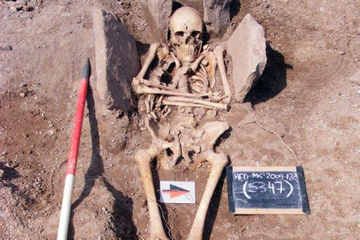 The skeleton of the medieval man, a possible knight, in his stone grave.
The skeleton of the medieval man, a possible knight, in his stone grave.
Credit: Headland Archaeology
The battered remains of a medieval man uncovered at a famous cathedral hint that he may have been a Norman knight with a proclivity for jousting.
The man may have participated in a form of jousting called tourney, in which men rode atop their horses and attacked one another, in large groups, with blunted weapons.
Archaeologists uncovered the man's skeleton, along with about 2,500 others — including a person who had leprosy and a woman with a severed hand — buried at Hereford Cathedral in the United Kingdom. The cathedral was built in the 12th century and served as a place of worship and a burial ground in the following centuries, said Andy Boucher, a regional manager at Headland Archaeology, a commercial archaeology company that works with construction companies in the United Kingdom.
A few years ago, the Heritage Lottery Fund, which is financed by the national lottery in the United Kingdom, awarded money to the cathedral for the landscaping and restoration of its grounds. But first, workers had to relocate the thousands of skeletons, many of which were near the ground's surface. [See Images of the Burial of Another Medieval Knight]
"By church law, anybody who died in the parish had to be buried in the cathedral burial ground," almost continuously from the time the cathedral was built until the early 19th century, Boucher told Live Science.
From 2009 to 2011, his team respectfully removed the human remains. But one stood out — a 5-foot-8-inch (1.7 meters) man with serious trauma on his right shoulder blade, 10 of his right ribs and left leg.
"He's the most battered corpse on the site," Boucher said. "He had the largest number of broken bones."
The man was about 45 years or older when he died, according to a bone analysis. He was buried in a stone-lined grave, a type of grave that was used between the 12th and 14th centuries, the researchers said.
Four of the man's ribs showed healed fractures that may have occurred simultaneously, suggesting a single instance of trauma, researchers wrote in the pathology report. Another four ribs were in the process of healing, indicating that the man was still recovering from the injuries when he died. The other two damaged ribs also show evidence of trauma, and his left lower leg has an unusual twisting break, one that could have been caused by a direct blow or a rolled ankle, according to the report.
In addition, the man had lost three of his teeth during his lifetime. A chemical analysis of his other teeth that matched different isotopes (a variation of an element) to foods and water samples from different geological locations showed that the man likely grew up in Normandy and moved to Hereford later in life, Boucher said.
Jousting battle
It's impossible to know what wounded the man, but his injuries are in line with those that nobility got through tourney, or jousting, the researchers said.
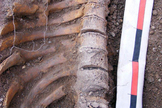 [image error]
[image error]
 Ten of the man's right ribs showed signs of fractures, including several that were not yet healed.
Ten of the man's right ribs showed signs of fractures, including several that were not yet healed.
Credit: Headland ArchaeologyView full size image"Tourney, the true form of jousting, is open combat between large groups of people in fields — basically, a mock battle," Boucher said. "They just laid into each other with blunted weapons, which is another reason we think he might be a knight, because none of the wounds to him are caused by sharp weapons. They're all caused by blunt-force trauma."
Perhaps the man injured his leg during a horse ride during one of these tourneys, if the foot had gotten stuck in the stirrup, Boucher said. Moreover, the injuries to his right shoulder and ribs could have happened if he fell from his horse, or was hit with a blunt weapon on the right side of his body, according to the report.
However, the man may have sustained his injuries in other ways. The coroner's files show that men older than age 46 who died of accidental deaths during medieval times were likely to die while traveling or transporting goods, according to the report. [8 Grisly Archaeological Discoveries]
The archaeologists also found several other intriguing human remains, including those of a man with leprosy and a woman with a severed hand.
The man with leprosy, likely about 20 years old at the time of his death, stood about 5 feet 5 inches (1.7 m) tall. People with this disease, which causes skin lesions and nerve damage, were usually buried in separate grounds because of stigma toward the condition. But perhaps the medieval bishop at the time, known to have suffered from leprosy, felt sympathy for this person and allowed for his burial at the cathedral, Boucher said.
The researchers aren't sure what happened to the woman. The punishment for thieves of that era was to cut off their hand, but it's unclear why a thief would have been buried at the cathedral, Boucher said.
"She's a shroud burial, so she's probably medieval — sometime between 1100 and 1600," he said.
The archaeologists are storing the exhumed skeletons in a clean and dry place, and will treat them in accordance with the cathedral's wishes, Boucher said.
Live Science
 The skeleton of the medieval man, a possible knight, in his stone grave.
The skeleton of the medieval man, a possible knight, in his stone grave.Credit: Headland Archaeology
The battered remains of a medieval man uncovered at a famous cathedral hint that he may have been a Norman knight with a proclivity for jousting.
The man may have participated in a form of jousting called tourney, in which men rode atop their horses and attacked one another, in large groups, with blunted weapons.
Archaeologists uncovered the man's skeleton, along with about 2,500 others — including a person who had leprosy and a woman with a severed hand — buried at Hereford Cathedral in the United Kingdom. The cathedral was built in the 12th century and served as a place of worship and a burial ground in the following centuries, said Andy Boucher, a regional manager at Headland Archaeology, a commercial archaeology company that works with construction companies in the United Kingdom.
A few years ago, the Heritage Lottery Fund, which is financed by the national lottery in the United Kingdom, awarded money to the cathedral for the landscaping and restoration of its grounds. But first, workers had to relocate the thousands of skeletons, many of which were near the ground's surface. [See Images of the Burial of Another Medieval Knight]
"By church law, anybody who died in the parish had to be buried in the cathedral burial ground," almost continuously from the time the cathedral was built until the early 19th century, Boucher told Live Science.
From 2009 to 2011, his team respectfully removed the human remains. But one stood out — a 5-foot-8-inch (1.7 meters) man with serious trauma on his right shoulder blade, 10 of his right ribs and left leg.
"He's the most battered corpse on the site," Boucher said. "He had the largest number of broken bones."
The man was about 45 years or older when he died, according to a bone analysis. He was buried in a stone-lined grave, a type of grave that was used between the 12th and 14th centuries, the researchers said.
Four of the man's ribs showed healed fractures that may have occurred simultaneously, suggesting a single instance of trauma, researchers wrote in the pathology report. Another four ribs were in the process of healing, indicating that the man was still recovering from the injuries when he died. The other two damaged ribs also show evidence of trauma, and his left lower leg has an unusual twisting break, one that could have been caused by a direct blow or a rolled ankle, according to the report.
In addition, the man had lost three of his teeth during his lifetime. A chemical analysis of his other teeth that matched different isotopes (a variation of an element) to foods and water samples from different geological locations showed that the man likely grew up in Normandy and moved to Hereford later in life, Boucher said.
Jousting battle
It's impossible to know what wounded the man, but his injuries are in line with those that nobility got through tourney, or jousting, the researchers said.
 [image error]
[image error]
 Ten of the man's right ribs showed signs of fractures, including several that were not yet healed.
Ten of the man's right ribs showed signs of fractures, including several that were not yet healed.Credit: Headland ArchaeologyView full size image"Tourney, the true form of jousting, is open combat between large groups of people in fields — basically, a mock battle," Boucher said. "They just laid into each other with blunted weapons, which is another reason we think he might be a knight, because none of the wounds to him are caused by sharp weapons. They're all caused by blunt-force trauma."
Perhaps the man injured his leg during a horse ride during one of these tourneys, if the foot had gotten stuck in the stirrup, Boucher said. Moreover, the injuries to his right shoulder and ribs could have happened if he fell from his horse, or was hit with a blunt weapon on the right side of his body, according to the report.
However, the man may have sustained his injuries in other ways. The coroner's files show that men older than age 46 who died of accidental deaths during medieval times were likely to die while traveling or transporting goods, according to the report. [8 Grisly Archaeological Discoveries]
The archaeologists also found several other intriguing human remains, including those of a man with leprosy and a woman with a severed hand.
The man with leprosy, likely about 20 years old at the time of his death, stood about 5 feet 5 inches (1.7 m) tall. People with this disease, which causes skin lesions and nerve damage, were usually buried in separate grounds because of stigma toward the condition. But perhaps the medieval bishop at the time, known to have suffered from leprosy, felt sympathy for this person and allowed for his burial at the cathedral, Boucher said.
The researchers aren't sure what happened to the woman. The punishment for thieves of that era was to cut off their hand, but it's unclear why a thief would have been buried at the cathedral, Boucher said.
"She's a shroud burial, so she's probably medieval — sometime between 1100 and 1600," he said.
The archaeologists are storing the exhumed skeletons in a clean and dry place, and will treat them in accordance with the cathedral's wishes, Boucher said.
Published on April 13, 2015 06:14
History Trivia - The Grand Union of the Augustinian order formed
April 13
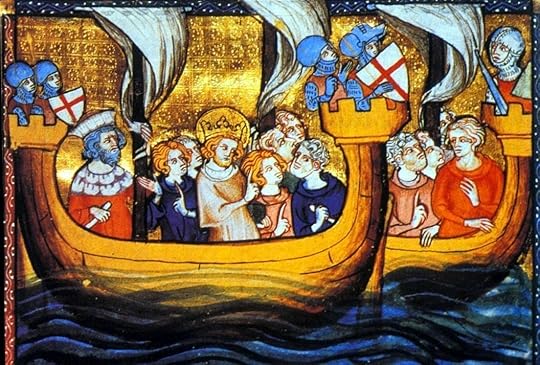
1250 The Seventh Crusade was defeated in Egypt; Louis IX of France was captured.
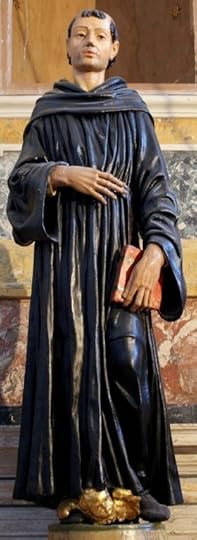
1256 The Grand Union of the Augustinian order formed when Pope Alexander IV issued a papal bull Licet ecclesiae catholicae.

1598 Henry IV of France issued the Edict of Nantes, allowing freedom of religion to the Huguenots. (Edict repealed in 1685.)

1250 The Seventh Crusade was defeated in Egypt; Louis IX of France was captured.

1256 The Grand Union of the Augustinian order formed when Pope Alexander IV issued a papal bull Licet ecclesiae catholicae.

1598 Henry IV of France issued the Edict of Nantes, allowing freedom of religion to the Huguenots. (Edict repealed in 1685.)
Published on April 13, 2015 01:30
April 12, 2015
History Trivia - 'Union Jack' created by royal decree
April 12
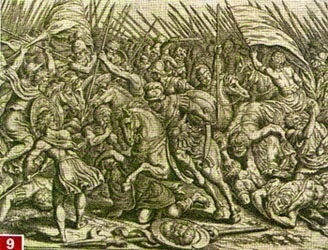
238 Gordian II lost the Battle of Carthage against the Numidian forces loyal to Maximinus Thrax and was killed. Gordian I, his father, committed suicide.
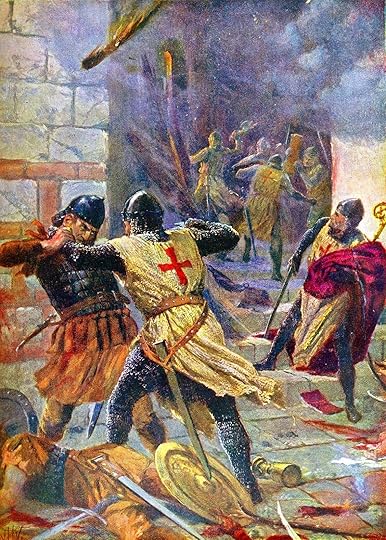
1204 The Crusaders of the Fourth Crusade breached the walls of Constantinople and entered the city, which they completely occupied the following day.

1606 The combined English-Scottish 'Union Jack' was created by royal decree, originally for use at sea only.

238 Gordian II lost the Battle of Carthage against the Numidian forces loyal to Maximinus Thrax and was killed. Gordian I, his father, committed suicide.

1204 The Crusaders of the Fourth Crusade breached the walls of Constantinople and entered the city, which they completely occupied the following day.

1606 The combined English-Scottish 'Union Jack' was created by royal decree, originally for use at sea only.
Published on April 12, 2015 01:00



